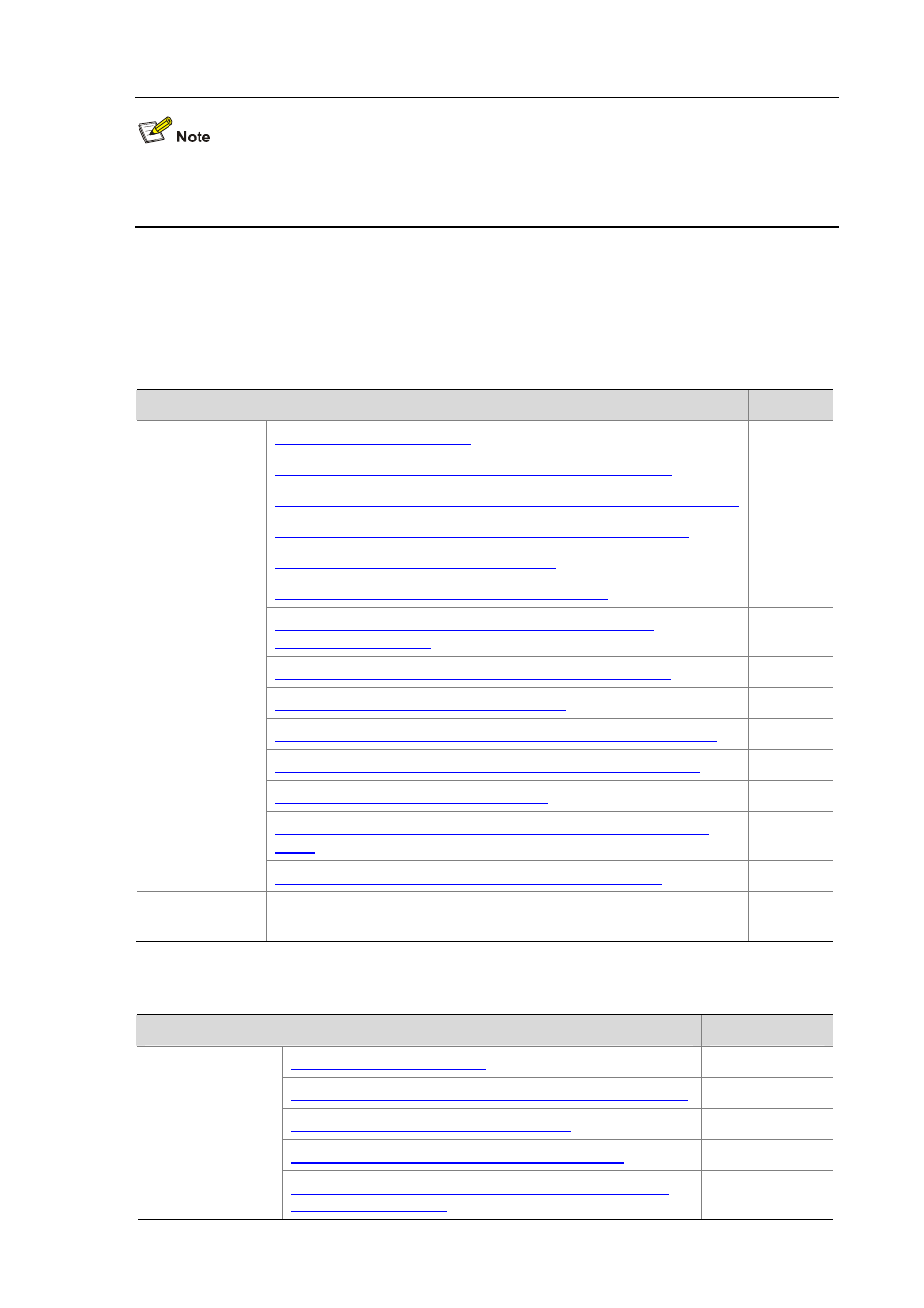Radius configuration task list – H3C Technologies H3C S3100 Series Switches User Manual
Page 425

2-11
You can use the display connection command to view the connections of Telnet users, but you cannot
use the cut connection command to cut down their connections.
RADIUS Configuration Task List
H3C’s Ethernet switches can function not only as RADIUS clients but also as local RADIUS servers.
Table 2-9 RADIUS configuration tasks (the switch functions as a RADIUS client)
Task
Remarks
Required
Configuring RADIUS Authentication/Authorization Servers
Required
Configuring Ignorance of Assigned RADIUS Authorization Attributes
Optional
Configuring the Sending Mode of Accounting Start Requests
Optional
Configuring RADIUS Accounting Servers
Required
Configuring Shared Keys for RADIUS Messages
Optional
Configuring the Maximum Number of RADIUS Request
Transmission Attempts
Optional
Configuring the Type of RADIUS Servers to be Supported
Optional
Configuring the Status of RADIUS Servers
Optional
Configuring the Attributes of Data to be Sent to RADIUS Servers
Optional
Configuring the Local RADIUS Authentication Server Function
Optional
Configuring Timers for RADIUS Servers
Optional
Enabling Sending Trap Message when a RADIUS Server Goes
Down
Optional
Configuring the
RADIUS client
Enabling the User Re-Authentication at Restart Function
Optional
Configuring the
RADIUS server
Refer to the configuration of the RADIUS Server.
—
Table 2-10 RADIUS configuration tasks (the switch functions as a local RADIUS server)
Task
Remarks
Required
Configuring RADIUS Authentication/Authorization Servers
Required
Configuring RADIUS Accounting Servers
Required
Configuring Shared Keys for RADIUS Messages
Optional
Configuring the
RADIUS server
Configuring the Maximum Number of RADIUS Request
Transmission Attempts
Optional